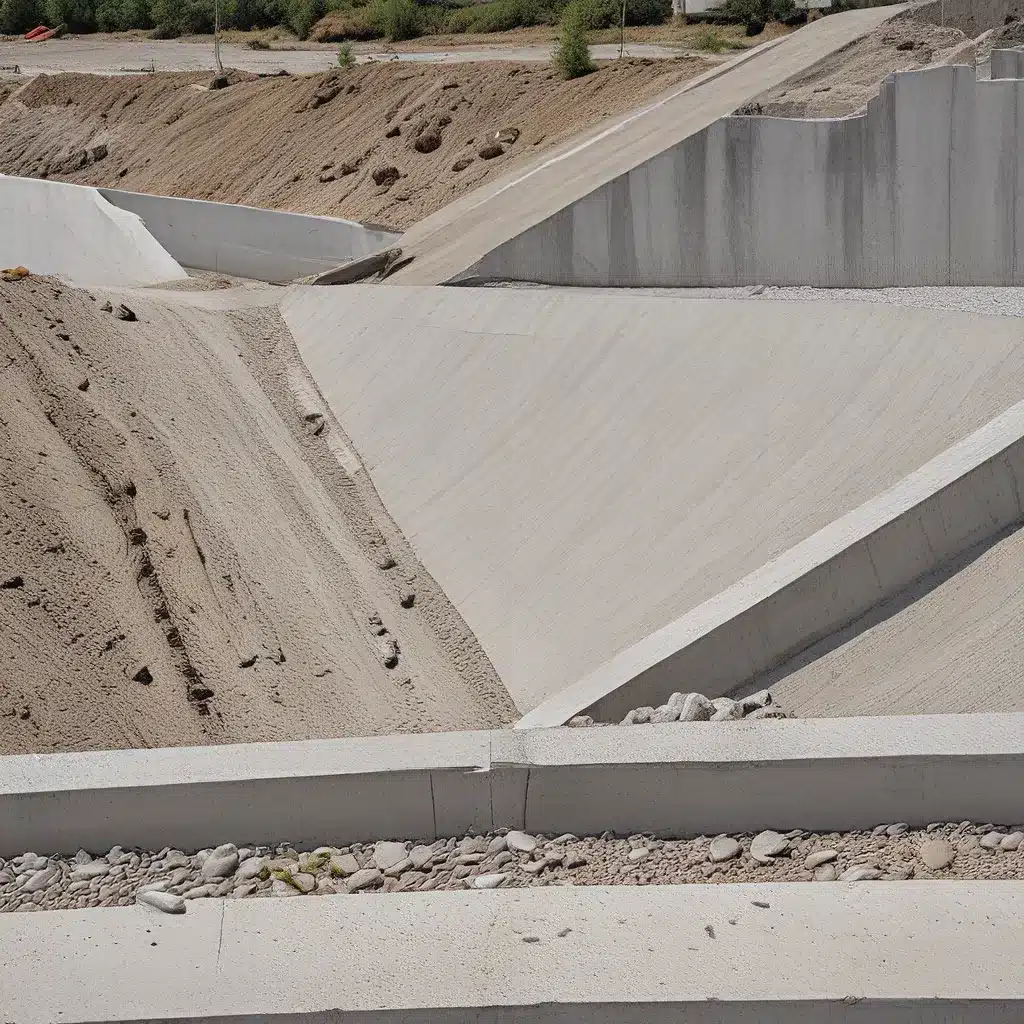
“Concrete? Isn’t that just the gray stuff we use to build roads and foundations?” You might be surprised to learn that the world of concrete is far more complex and fascinating than it may seem at first glance. As a material, concrete is a crucial component of modern infrastructure and development, but it also comes with a unique set of challenges when it comes to sustainability.
The Concrete Conundrum
I’ll admit, I used to think of concrete as nothing more than a necessary evil – a material that got the job done, but at a cost to the environment. But as I’ve delved deeper into the world of concrete project management, I’ve come to realize that there’s a delicate balance to be struck between the economic and environmental considerations.
On one hand, concrete is an incredibly versatile and durable material that has enabled us to construct the towering skyscrapers, expansive bridges, and robust transportation networks that define the modern world. It’s a key driver of economic growth and development, providing jobs, supporting local industries, and facilitating the movement of people and goods. Sustainability isn’t just about the environment – it’s also about ensuring economic and social progress that can be maintained in the long-term.
But on the other hand, the production of concrete is a major contributor to global greenhouse gas emissions, with the cement industry alone accounting for around 8% of worldwide CO2 output. Additionally, concrete production can have significant impacts on local ecosystems, with the mining of raw materials, energy-intensive manufacturing processes, and waste disposal all posing potential environmental hazards.
So how do we reconcile these competing priorities? How can we ensure that the essential role of concrete in modern development is balanced with the need to protect our planet and its resources? This is the challenge that concrete project managers and sustainability experts are grappling with every day.
A Multifaceted Approach to Sustainable Concrete
The path to sustainable concrete isn’t a simple one, but it’s a journey that the industry is actively engaged in. Here are some of the key strategies being employed to make concrete projects more environmentally friendly:
1. Reducing Carbon Emissions
One of the primary focuses in the quest for sustainable concrete is reducing the carbon footprint of cement production. This involves exploring alternative cement formulations that incorporate supplementary cementitious materials, such as fly ash or ground granulated blast-furnace slag, which can lower the amount of traditional cement required. The United Nations’ Sustainable Development Goals have also emphasized the importance of tackling climate change and promoting sustainable industry as critical priorities.
Concrete producers are also investing in more energy-efficient manufacturing processes, including the use of renewable energy sources, to further drive down emissions. And innovative technologies like carbon capture and storage are being explored to capture and sequester the CO2 generated during cement production.
2. Enhancing Durability and Longevity
Another key aspect of sustainable concrete is ensuring that the structures we build using it are designed to last. By improving the durability and longevity of concrete structures, we can reduce the need for frequent repairs, rebuilds, and resource-intensive maintenance over the long term.
This involves optimizing concrete mix designs, incorporating reinforcements and admixtures, and employing advanced curing techniques. It also means rethinking the way we approach concrete project planning and design, with a greater emphasis on factors like long-term performance, adaptability, and resilience.
3. Promoting Circularity and Waste Reduction
The concept of the circular economy is also gaining traction in the concrete industry, with a focus on minimizing waste and maximizing the reuse and recycling of materials. This includes finding ways to repurpose and recycle concrete from demolished structures, as well as exploring the use of recycled aggregates and other waste products in new concrete mixes.
By closing the loop on concrete waste, we can not only reduce the strain on natural resources but also divert materials from landfills and incineration. The United Nations’ Sustainable Development Goals have also emphasized the importance of sustainable consumption and production patterns, with a focus on reducing waste and promoting circularity.
4. Fostering Collaboration and Innovation
Achieving sustainable concrete isn’t something that any single entity can accomplish on their own. It requires a collaborative effort involving concrete producers, construction companies, researchers, policymakers, and communities.
By sharing knowledge, pooling resources, and fostering cross-sector partnerships, the industry can accelerate the development and implementation of innovative solutions. This might include joint research initiatives, pilot projects, and the creation of industry-wide standards and best practices.
The Concrete Sustainability Journey: Progress and Challenges
The good news is that the concrete industry is making significant strides in its sustainability journey. Many leading concrete services and solutions providers, like the one you’re reading this on, are actively investing in research, technology, and process improvements to reduce the environmental impact of their operations.
But the reality is that it’s a complex and multifaceted challenge, and there’s still a long way to go. Balancing the economic realities of the industry with the pressing need for environmental stewardship is no easy feat, and it will require sustained commitment, innovation, and collaboration from all stakeholders.
The path to sustainable concrete may not be a straight one, but it’s a journey worth undertaking. After all, the stakes are high – the decisions we make today will shape the world our children and grandchildren inherit. And I, for one, am determined to be part of the solution, not the problem.
So, let’s roll up our sleeves and get to work. The future of concrete, and the planet, depends on it.

